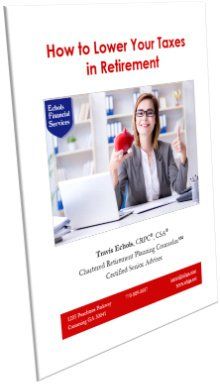The Seven Biggest Threats to a Successful Retirement

The retirement landscape has changed over the last few
decades. With advances in health care, people are living longer. The old model
was to retire in your mid-60s and live 6 to 10 years. Today, it is to retire in
your mid-60s and live 20 to 30 years.
Many people will live into their 90s and beyond, and that is not accounting for future advances in medicine and fields such as epigenetics.
It is a blessing to live in such a time as this and be able to watch our grandchildren and great grandchildren grow up; but along with that blessing are some financial dangers.
Wade Pfau, Ph.D., CFA, and Professor of Retirement Income at The American College identifies seven of the biggest threats associated with longer life expectancies. I will attempt to simplify and elaborate on Dr. Pfau’s risk points below.
Sign up to receive my free monthly email articles...because you want to make the most out of your retirement .
1.
Unknown Life Expectancy
. Most retirees have at
least one guaranteed lifetime income stream in retirement. One thing to
remember about these payments is the cost-of-living increase normally falls
behind the inflation rate. Social Security has a cost of living adjustment (COLA),
but does not keep pace with health care related expenses which generally
increase during the retirement years.
Also, most defined pensions do not have
any cost-of-living increase. So, over time, you are getting further and further
behind regarding real purchasing power.
As scientists and doctors work together to better understand diseases, life spans are likely to continue to climb. This represents an unknowable and potentially huge expense, which is the biggest challenge for retirement planning.
2. Reduced Earnings Capacity
. The job market is rapidly improving
due to government deregulation and other economic stimuli which are good for businesses,
but it is still true that older people have fewer opportunities in the labor
market to earn a high income.
Employers sometime prefer younger workers because
they demand less pay and have more energy. Often, but not always, older workers
simply don’t feel like working as hard as they did when they were younger. And
with their increased risk of health-related problems, older workers are
perceived as being a greater liability to a company.
For many retirees who want to work part-time or seasonally, high paying jobs are few and far between, unless they can find a way to leverage their past skills, expertise, and/or relationships.
3.
Visible
Spending Constraint
. As I have said before, investing for accumulation is very
different from investing for distribution. Without knowing how long investment
withdrawals will be needed, and how much withdrawals will need to rise over
time to cover increased costs, most retirees err on the conservative side and
plan to live into their 90s and assume an average historical inflation rate of 3
to 4% per year.
Generating a stable, secure, and sustainable income from
investments over such a long period requires careful management of liquidity,
investment growth, investment risk, withdrawal rates, withdrawal order, taxes,
and inflation. It is a real risk for retirees to spend more than anticipated
and run out of money.
For those who are planning carefully, however, it is a matter of setting the right safe withdrawal rate and/or being able to adjust spending if necessary to make sure they don’t run out of money.
4. Heightened Investment Risk
. Due
to portfolio size effect and sequence-of-returns risk, a retiree is especially
vulnerable to poor returns early
in retirement—in the danger zone of the 10
years prior to, and the 10 years after, retirement.
I’ve written about this at greater length in How to Navigate the Retirement Danger Zone . In the danger zone, a retiree needs to manage spending and investment volatility without being so risk averse as to be short-sighted and lose ground with inflation over the long run.
5. Compounding cost of living
. For many
retirees, guaranteed lifetime payments like Social Security are not enough to
replace their previous wages and/or fund the lifestyle they desire. They need
to supplement their income with withdrawals from their retirement investments.
I talk about the “black ice” of inflation in my article Why Simple Savers Lose in the End . At an average annual inflation of 3%, a retiree will have less than half their original purchasing power after 25 years. Investments are needed to outpace inflation and compensate for guaranteed incomes (e.g., pensions, annuities) that fall behind in purchasing power over time.
6. Big unexpected expenses
. A few large spending shocks can blow up an otherwise good retirement plan. Home repairs
due to disasters, or just the consistent wear-and-tear of the elements on your house, can be
very costly.
Unexpected illnesses or accidents can result in large medical and/or long term care expenses.
Retirees can often feel compelled to help family
members who are in financial straits due to a job loss or some health-related
issue. These types of unforeseen needs are not typically planned for in the
budget.
It can be a big mistake to “tie up” too much money to meet long-term
needs and assume no such short-term expenses will occur over a long retirement.
So, liquidity is another important retirement planning factor.
7.
Declining mental abilities
.
Finally, Dr. Pfau reminds us to consider the unfortunate reality of declining mental abilities. This
will hinder retirees' ability to make sound financial decisions around the issues
I’ve discussed in this article.
There is usually one person who does most of the financial planning, and when that person can no longer do it well, there is no one to recognize it until it is too late. There is often no oversight or succession plan to make sure that the family is financially protected from financial errors in judgment. I have talked with too many surviving spouses who lament not getting involved earlier.
Conclusion
When planning for your retirement,
make sure to keep these seven threats in mind. And if you are not inclined to spend
the time and energy to protect your family from these threats, seek a retirement
planning
specialist (not a general financial planner) whose focus is helping people with these specific problems.
Keeping these threats in mind, and planning accordingly, can make all the difference between a satisfying or disappointing retirement.


Travis Echols , CRPC®, CSA
Receive free Social Security Guide by email




Investment Advisory Services offered through JT Stratford, LLC. JT Stratford, LLC and Echols Financial Services, LLC are separate entities.











